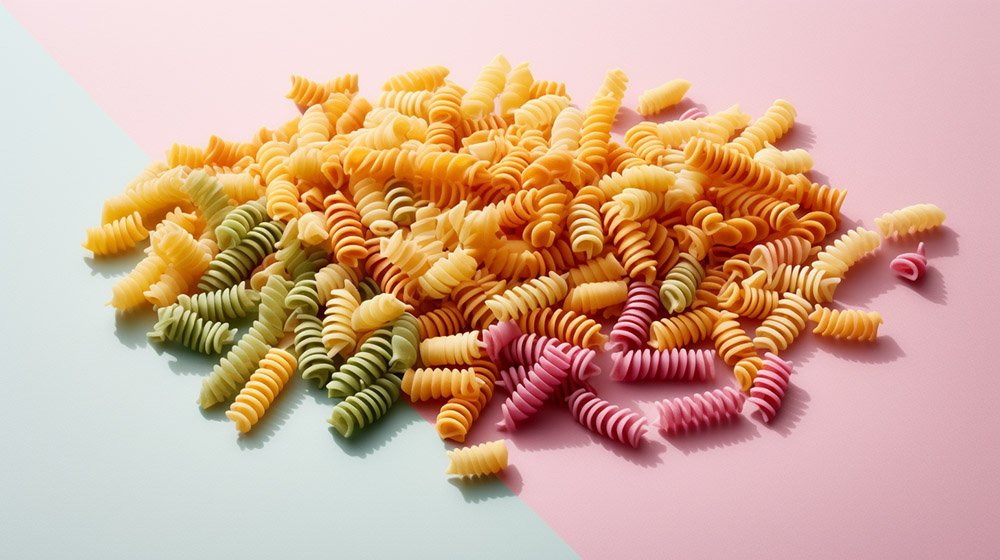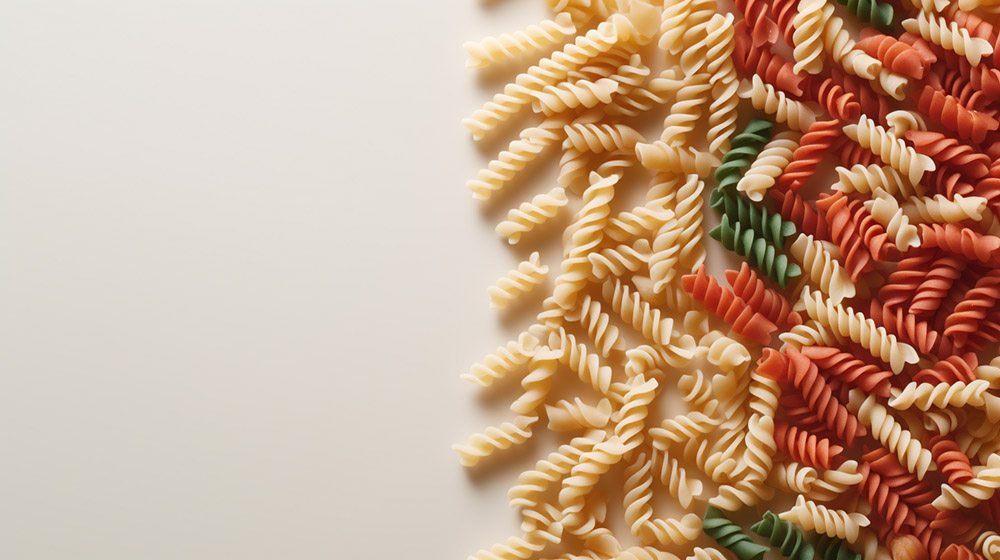Pasta – the comfort food extraordinaire, the base of countless dishes across various cuisines, and a food item with surprising complexity. Among the myriad types of pasta available, two stand out when we’re considering pasta with a twist – quite literally.
Fusilli and Rotini, both spiral-shaped pastas, are commonly used in a variety of dishes. But what are the differences, and do they really matter when it comes to cooking and eating? Let’s find out.
Main Differences
On the surface, fusilli and rotini may seem quite similar. Both are corkscrew-shaped pastas, perfect for holding onto thick sauces and chunky ingredients.
However, closer inspection reveals some key differences. Fusilli is typically longer and has a tighter spiral, while rotini is shorter and has a more relaxed spiral.
This means that fusilli can hold more sauce in its coils and is well suited to heavier sauces, while rotini works well with lighter sauces and in pasta salads.
Nutrition Comparison
Nutritionally, fusilli and rotini are quite similar, as they are both typically made from either white or wheat flour. Here’s a basic comparison:
| Nutrient | Fusilli (per 100g) | Rotini (per 100g) |
|---|---|---|
| Calories | ~365 | ~365 |
| Protein | ~13g | ~13g |
| Carbohydrates | ~75g | ~75g |
| Fiber | ~3g | ~3g |
| Fat | ~1.5g | ~1.5g |
As with any pasta, the nutritional content can vary based on the brand or specific product. Whole wheat versions of both fusilli and rotini will have more fiber and potentially more protein.
25 Facts about Differences and Similarities
1. Origin
Fusilli originates from Southern Italy and gets its name from “fuso,” meaning “spindle” – a reference to the method by which it was traditionally spun. On the other hand, rotini is an American creation, designed to mimic Italian pasta shapes.
2. Shape
While both pastas are spiraled, fusilli is usually longer with a tighter coil, compared to rotini’s shorter length and looser spiral.
3. Sauce Pairing
The tight coils of fusilli are great for trapping thick sauces, while the broader spirals of rotini are perfect for lighter sauces and dressings.
4. Pasta Salad
Rotini is often a go-to for pasta salads because its crevices can capture small bits of vegetables, cheese, or meat. Fusilli, while also used in pasta salads, is more commonly paired with thicker sauces.

5. Baking
When it comes to baked pasta dishes, both fusilli and rotini can be used. Their twisted shapes can hold onto more sauce, resulting in a more flavorful bite.
6. Cooking Time
Due to their similar thickness, fusilli and rotini generally have similar cooking times. However, always refer to the package instructions as cooking times can vary between brands.
7. Availability
Both fusilli and rotini are widely available in most supermarkets. They also both come in a variety of versions, such as whole wheat, tricolor, and gluten-free.
8. Italian Dishes
Fusilli is often used in traditional Italian dishes due to its origins, whereas rotini, being an American creation, is not.
9. Variations
There are several varieties of both fusilli and rotini, including whole wheat, tricolor (spinach and tomato added), and gluten-free versions.
10. Texture
The texture of both pastas can vary based on cooking time. When cooked al dente, they offer a delightful chewiness that adds to the dining experience.
I’ll continue with the remaining facts in the next message.
11. Gluten-Free Options
Both fusilli and rotini are available in gluten-free versions, using grains such as quinoa, rice, or corn instead of traditional wheat.

12. Broth-based Dishes
While both pastas can be used in broth-based dishes, fusilli’s longer length makes it more suited for these types of recipes.
13. Versatility
Both fusilli and rotini are incredibly versatile and can be used interchangeably in most recipes, whether it’s a cold pasta salad or a hot creamy pasta dish.
14. Children’s Meals
Thanks to their fun, spiraled shapes, both fusilli and rotini are popular choices for children’s meals.
15. Texture Retention
Both fusilli and rotini hold up well in dishes and don’t become mushy easily, making them great choices for meals that need to be reheated.
16. Drying Time
Because of their shape, both fusilli and rotini have longer drying times than some other types of pasta.
17. Cold Dishes
Rotini’s slightly tougher texture makes it a favorite for cold dishes like pasta salads, where it retains its shape even when mixed with a variety of ingredients.
18. Soup Use
Fusilli’s ability to retain sauce and its slightly softer texture when cooked make it an ideal choice for hearty, thick soups.
19. Size
On average, fusilli is longer than rotini, which tends to be shorter and more compact.
20. Sauce Retention
Both fusilli and rotini are excellent at retaining sauce, thanks to their helical structure. However, fusilli’s tighter coils might give it a slight edge in holding onto thicker sauces.
21. Italian Vs. American
Fusilli is a traditional Italian pasta, whereas rotini is more of an American innovation, inspired by Italian pasta shapes.
22. Market Presence
While both pastas are popular, fusilli has a broader global presence due to its Italian origins.
23. Name Origins
“Fusilli” is derived from the Italian word for “spindles,” while “rotini” is likely derived from the Italian word “rotini,” meaning “small wheels.”
24. Cultural Significance
In Italy, fusilli has cultural significance and is used in various regional dishes. On the other hand, rotini is a staple in American Italian-style cuisine.
25. Pairing with Ingredients
Both fusilli and rotini pair well with a variety of ingredients. Fusilli is often paired with robust, hearty sauces, while rotini is more frequently used in dishes with lighter, more delicate flavors.

